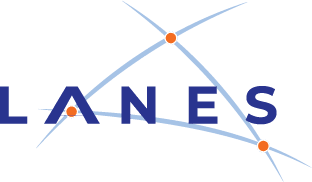Healthcare information organizations (HIOs) deliver to care providers the ability to seamlessly exchange patient data, which is crucial for delivering coordinated care and improving health outcomes. A recent directional survey conducted by a leading market research firm commissioned by LANES sheds light on the top performance needs of HIOs and highlights the strengths and opportunities within national and regional/local HIOs.
Top Performance Needs of HIOs
Based on the survey responses of 45 healthcare executive leaders in greater Los Angeles, the following were identified as the average top five performance needs of an HIO:
- Coordinating patient care
- Accessing patient care information from other facilities
- Enhancing workflow efficiency
- Improving clinical quality and outcomes
- Managing high utilizers of emergency services
Where National Networks Deliver the Most Value
Entities that have access to national data sharing networks such as CommonWell, CareQuality, or eHealth Exchange generally find value in coordinating patient care and accessing patient information from other facilities. However, the survey revealed that these networks fall short in enhancing workflow efficiency and improving clinical quality and outcomes. Only 39% of respondents believed national networks were somewhat effective in enhancing workflow efficiency, while 40% felt they were only somewhat effective in improving clinical quality and outcomes.
The Small, but Mighty Regional/Local HIO
In contrast, regional and local HIOs showcased their strengths in specific areas of data acquisition and management. The survey found that 56% of respondents considered regional/local HIOs very effective in enhancing workflow efficiency, while 46% believed they were effective in improving quality and outcomes. These findings suggest that regional and local HIOs have the potential to outpace their national counterparts in certain aspects of data utilization.
A Complementary Approach
The survey results do not advocate for a binary choice between national networks and regional/local HIOs. Rather, they emphasize the complementary nature of these two entities in building a comprehensive ecosystem for data sharing. National networks serve as a critical foundation for broad data exchange, while regional and local HIOs excel in achieving the “final mile” of synthesizing detailed, high-quality, and current data. This collaborative approach ensures that both national and localized data needs are met, ultimately improving patient care outcomes. This approach has been endorsed by leaders in the healthcare industry, including Jay Nakashima, the executive director of eHealth Exchange. According to Nakashima, regional and statewide HIOs can together manage and share local data to enhance care outcomes. The growing recognition of the benefits of this collaborative approach paves the way for continued progress in the interoperability of health information systems not only in L.A., but also across the U.S.
Gain Access to the Power of HIOs
To support the adoption of data exchange, the California Governor and State Legislature have allocated $47 million for the market implementation of DxF (Data Exchange Framework) requirements through a DSA (Data Sharing Agreement) Grant Program. This initiative aims to provide funds to DSA signatories, enabling them to subsidize their implementation efforts and activities in meeting DSA requirements.
The first round closes on midnight, June 16; the second round will be open in late
June; and the third round will open in July – future dates are forthcoming from CalHHS.
With this financial support, leaders across healthcare, mental health, social services, and government sectors should take immediate action to leverage data sharing for operational efficiency and improved patient health.
To learn more, visit the Center for Data Insights and Innovation.



